Archive for ‘Professional Organizing’ Category
Paper Doll’s 23 Ideas for a More Organized & Productive 2023
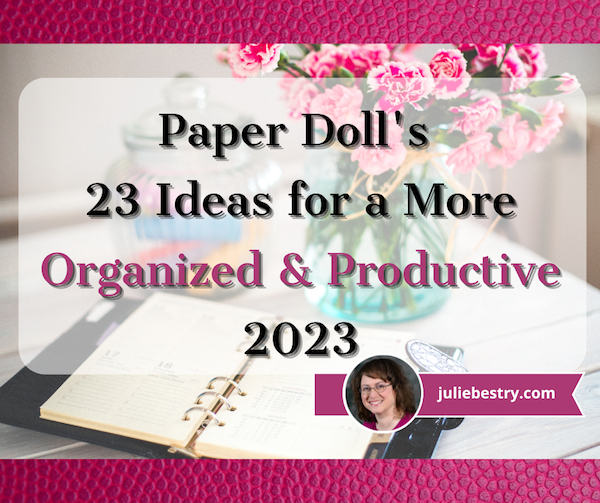
Happy New Year! And welcome to GO (Get Organized) Month 2023, where we celebrate efforts to make our spaces more organized and make ourselves more productive.

We in the National Association of Productivity and Organizing Professionals (NAPO) love this opportunity to help you make this year your best. To that end, today’s post offers up 23 ideas for achieving what you want this year in your space, schedule, and life.
CREATE A FRESH MINDSET
1) Learn last year’s lessons to build next year’s success.

You were probably super-busy last week, but I encourage you to read the final Paper Doll post of 2022. (Trust me, it was a good one!)
Organize Your Annual Review & Mindset Blueprint for 2023 is full of questions and resources for figuring yourself (and your last year) out.
I often joke to clients that while I’m not a mental health professional, I am like a marriage counselor between you and your stuff. Well, last week’s post is like a cross between a therapy session and a deep dive with your BFF. It rejects the demoralizing proposition of resolutions in favor of creating a fresh, motivating mindset for the coming year, whether with a word, quote, or motto of the year, and uses signage, a vision board, or a music playlist to keep your eyes on the prize that is your new and improved life.
2) Don’t take my word for it. Listen to James Clear.
If you’ve been paying attention to the news in the “habit” realm at all in the last few years, you know that James Clear wrote Atomic Habits: An Easy & Proven Way to Build Good Habits & Break Bad Ones, a book that takes the research of habit researchers (like Charles Duhigg in his The Power of Habit) and makes it all actionable.
Paper Doll Responds When They Say “Be Our Guest”
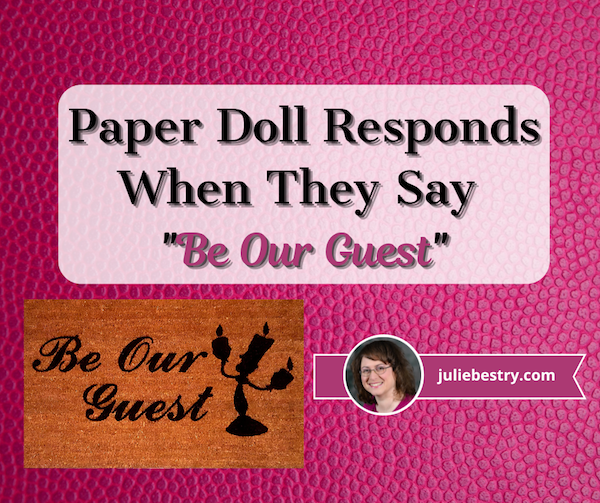
The theme of this week’s post has become somewhat bittersweet since the I originally conceived it. On Tuesday, October 11, 2022, Dame Angela Lansbury passed away at the age of 96. Depending on your age and tastes, you may know Lansbury from various points in her eighty-year career.
If you’re a cinephile, you may know her from films from her earliest role in Gaslight and in the 1940s to The Manchurian Candidate in the 1960s and Bedknobs and Broomsticks in the 1970s, to Anastasia, Mary Poppins Returns and the Knives Out sequel, which hasn’t even been released yet!
If you’re a fan of Broadway, you could have caught her in anything from Stephen Sondheim’s early Anyone Can Whistle to the title role in Auntie Mame to the distasteful pie-baking Mrs. Lovett in Sweeney Todd: The Demon Barber of Fleet Street. And, if you watched television in the 1980s, 1990s, or 2000s, then you probably knew her best as Jessica Fletcher from Murder, She Wrote.
However, if you’ve been a kid or a parent or a baby sitter any time since 1991, then you will recall Lansbury voicing Mrs. Potts (alongside Jerry Orbach’s Lumière) in the classic animated Disney production of Beauty and the Beast. And if you’re wondering what any of this has to do with organizing, here’s a hint:
Perhaps this post’s theme might seem less shoehorned in (if less palatable) if I could sing it to you. But recently, I was asked to serve as a guest and offer advice and information on three disparate topics: productivity, technology, and paper, and I’d like the opportunity to share this material with you.
THE CHATTANOOGA TIMES FREE PRESS EDGE MAGAZINE
On October 20, 2002, almost twenty years ago, in Professional Organizers Are A Growing Trend, I was profiled in the Chattanooga Times Free Press for the first time. Over the years, I’ve been delighted to be interviewed, right up through March 2021, when I was profiled in the newspaper’s Edge, a business-themed magazine.
However, I was particularly giddy when Jennifer McNally, the new editor of Edge asked me to write the October Business Acumen column in an issue devoted to staying productive. While the issue is geared toward professionals and business owners in the Chattanooga region, I think you’ll find it informative and appealing, no matter where you reside or what you do.
You can read the entire October issue of the Edge — my column spans pages 24 and 25, but other columns range from How to Own Failure (and Still Preserve Your Reputation) to the Take It From the Top series with advice from Chattanooga leaders on issues ranging from tracking goals, focus, and discipline to allocating time strategically and anticipating challenges.
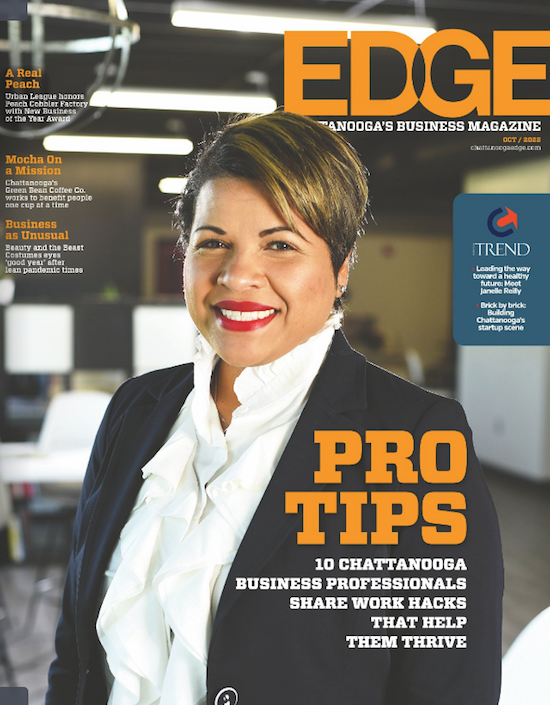
You can also head directly to my guest Business Acumen column, An Expert’s Secrets to Stress-Free Productivity on the newspaper’s site. To give you a taste, it starts with:
Do you feel like life is more demanding than ever, and that effective productivity is hard to achieve? Workdays (and too often, nights) are packed with back-to-back meetings and Zoom calls, Slack notifications and email alerts. Productivity can be elusive.
Maybe you feel like you’re doing more but accomplishing less that rewards you. Increasingly, we’re seeing toxic productivity, where pressure to meet unrealistic expectations zaps physical and mental energy, damaging motivation and self-esteem. But it doesn’t have to be this way.
In the column, I share my strategies for conquering overwhelm by identifying your priorities, protecting your focus, creating flow, and conquering procrastination. I encourage you to take a peek and let me know what you think.
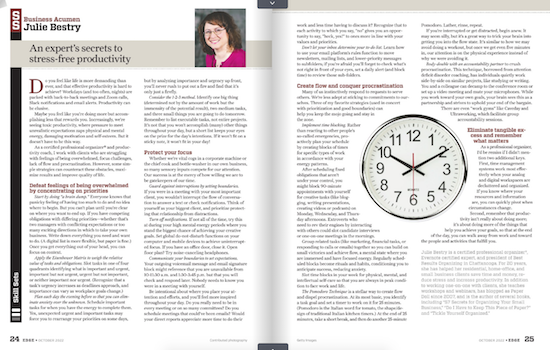
THE STREAMLINED CONNECTION
A particularly charming guest experience was getting to be on my friend and colleague Miriam Ortiz Y Pino‘s video podcast, The Streamlined Connection.
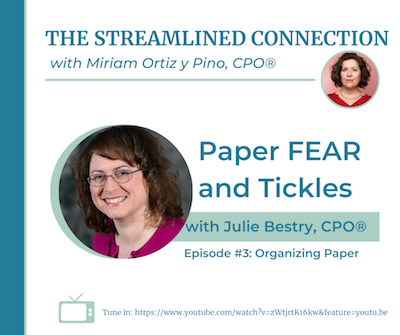
Miriam is a Certified Professional Organizer and Money Breakthrough Business Coach. Her company is More Than Organized, and she’s a firecracker! Like me, she’s been at this for more than two decades, and Miriam’s got an amazing way of creating transformation.
Miriam offers one-on-one in-person and virtual services including organizing, business coaching, speaking, and training in a variety of areas (including the fascinating topic of Sacred Money Archetypes). Miriam also delivers Streamlined Solutions courses for tackling clutter, time troubles, and paper, and live and virtual group workshops for professionals.
It’s an absolute trip to talk to Miriam, because every conversation yields insight. So, I was tickled to be the first guest on her show.
As a Paper Doll reader, you will not be surprised that, when given the opportunity to talk about organizing, I chose my favorite topic, paper. However, unlike when I talked about the philosophical aspects of Why Paper Still Matters on the NAPO podcast earlier this summer, Miriam and I went in a different direction.
On Organizing Paper with Julie Bestry: Paper FEAR and Tickles, we explored the nitty gritty of the frustrations of different types of paper clutter, and how strategically considering both fear and tickles can help you dig out from under.
Miriam has since had some organizing and productivity industry rock stars as guests, including Amy Payne, Regina Lark, Geralin Thomas, Mike Vardy, Leslie Josel, Robyn Reynolds, and Nietra Rose! (Seriously, check it out!)
ORGANIZED ASSISTANT
The amazing (and Canadian) Janet Barclay has graced Paper Doll‘s pages many times over the years. I’ve known Janet since the days before modern social media, when we were both getting the hang of things on Ryze.com. (Don’t go visit; it’s all spam now. Sigh.)
Although Janet started out as a professional organizer and productivity consultant, she eventually found and perfected her niche in supporting organizing professionals. She works her magic as a “website caregiver and designer,” which means she helps people keep their online identities afloat so we can focus on our own clients. She rocks that way.
But Janet rocks another way, as one of the biggest cheerleaders of the organizing and productivity profession. Her Organized Assistant web site is home to blog posts and articles that provide a broad perspective for those of us who work in the field, but she also created the Productivity and Organizing Blog Carnival for the reading public, collecting monthly themed posts on categories ranging from organizing junk drawers to efficiency in the workplace to organizing when a member of the family is ill.
I’m proud to say that I’m one of Janet’s Megastar Blogggers, having contributed to more than 50 monthly carnivals, and am joined by my fancy-pants colleagues Hazel Thornton, Linda Samuels, Sabrina Quairoli, and Seana Turner.
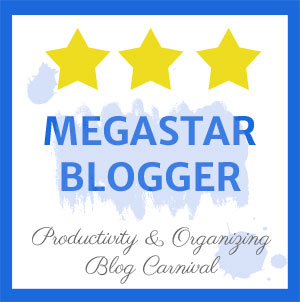 In the spring, I referenced having recertified as an Evernote Certified Expert. As I often talk about the reasons I love and use Evernote, Janet asked if I’d like to share the certification process with her readers, and I was only too excited to do so.
In the spring, I referenced having recertified as an Evernote Certified Expert. As I often talk about the reasons I love and use Evernote, Janet asked if I’d like to share the certification process with her readers, and I was only too excited to do so.
As an Evernote user, it was easy to pull together my resources for the guest post. I had notes from my original certification as an Evernote Certified Business Consultant in 2015, then as an Evernote Certified Consultant a few years later, and now under the current program, an Evernote Certified Expert. Evernote’s so-powerful-it’s-spooky search capacity found everything I needed to write Adventures in Becoming an Evernote Certified Expert. (This also means I had no excuse for procrastinating on actually writing it!)
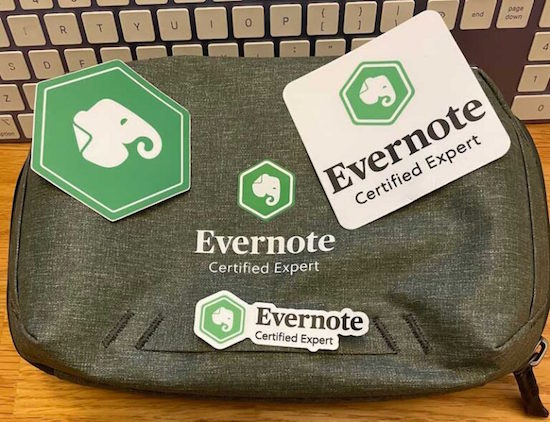
Hopefully, you’ll be entertained as you learn about my experience getting certified, and it may encourage you to get certified, use the skills and support of an Evernote Certified Expert, or just learn more about Evernote in its newest incarnation as so much more than just a note-taking app.
Writing this, I’m shocked to realize it’s been nine years since I’ve written an entire post about Evernote. It’s a completely different platform now, with so many more features and opportunities to organize your digital life. So, don’t be surprised to see more Paper Doll posts in the future regarding how you can use Evernote to be more organized and productive.
BE YOUR GUEST?
As much as I love working with my in-person and virtual clients, giving presentations, and writing this blog, it’s even more fun when I get to share a (digital) stage or blog space. As I’ve reported, throughout 2022 I’ve been on a variety of podcasts and have guested at various summits, about which you can read more:
Paper Doll on the NAPO Stand Out Podcast: Why Paper Still Matters
Paper Doll Picks: Organizing and Productivity Podcasts
Paper Doll on Planning & Prioritizing for Leadership
Paper Doll Shares Secrets from the Task Management & Time Blocking Summit 2022
Not enough Paper Doll for you? You can also check out my Press Room page for more links to interviews and guest spots.
If you have a podcast, summit, or blog for which you might like to interview me on topics related to paper and information organizing or productivity, please feel free to use the Contact page on my site to let me know how we might work together.
ONE LAST LOOK AT MRS. POTTS & LUMIÈRE
Paper Doll cannot live by organizing alone, and I hope that as my guests, you take some delight in the pop culture cameos that have populated this blog since 2007.
Whether solving crimes as Jessica Fletcher or making the worst pies in London as Mrs. Lovett, or getting nominated for Academy Awards, Tony Awards, Golden Globes, or Emmy or Grammy Awards, Angela Lansbury was beloved. And as Lumière to her Mrs. Potts, Jerry Orbach (Law & Order‘s Lennie Briscoe, Baby’s father in Dirty Dancing, and in oodles of other roles on stage and screen) was no slouch, either. With that, I’d like to close today’s post with this behind-the-scenes view of how they put together “Be Our Guest.”
Thank you for being my guest at the Paper Doll blog, and thank you for letting me be a guest on your computer and mobile devices all these years.
Paper Doll Helps You Get By With a Little Help From Her (Brilliant) Friends

I love sharing my expertise and research with you about a wide variety of topics, from getting more (of the right things) done to conquering toxic productivity to accessing and organizing vital documents.
Although I’m a generalist in my professional organizing practice, I specialize in blogging about organizing paper and information and boosting productivity. But that doesn’t mean that’s all you want to hear about. After all, man (and woman) cannot live by bread alone. We also need cheese. (In Paper Doll‘s case, lots and lots of cheese.)
As a Certified Professional Organizer®, member of NAPO, and Evernote Certified Expert, I get to hobnob with other likeminded specialists, learn from them, and share their knowledge with you. Today, I’ve got a cornucopia of resources for making your life, family, and world run a little more smoothly.
LATE, LOST & LAGGING: UNDERSTANDING ADHD & EXECUTIVE FUNCTIONING
October is ADHD Awareness Month.
As recently as a few decades ago, people lacked a clear understanding of ADHD. If they thought about it at all, they considered it as something that only impacted little boys, that it was about being rambunctious and intentionally (or rebelliously) inattentive, and that it was something people grew out of. It was rarely acknowledged as something that impacted women and girls, and most people, if they considered it at all, thought it was something kids grew out of.
Now, we know more. We know that ADHD is a brain-based disorder, a neurological condition that affects people across all ages, genders, and socio-economic and cultural areas. (It’s diagnosed two-to-three times more often in boys than girls, but that may be because the expression of ADHD in girls can be less disruptive, which says more about socialization norms and pressures than it does about ADHD.)
ADHD impacts the lives people across all levels of education and intelligence. Willful ignorance about ADHD expresses itself in all levels of education and intelligence, as well.
I once worked with a client for whom her late-in-life diagnosed ADHD had caused distress throughout her life, and the emotional abuse inflicted on her by her physician spouse, who refused to “believe” in ADHD, was both eye-opening and frustrating as we tried to implement solutions. (Yes, Dr. Shouty-Dude, ADHD is real, and no, you can’t “conquer” it by having more “diligence” and “willpower.” Grrrr.)
If you or someone you know has ADHD or other challenges with executive functioning, ADHD Awareness Month is a great opportunity to learn more, and I’ve got a great webinar resource for you.
My NAPO colleague, ADHD Student Coach Leslie Josel of Order Out of Chaos, is one of my absolute go-to experts when I have a question about ADHD and executive function.
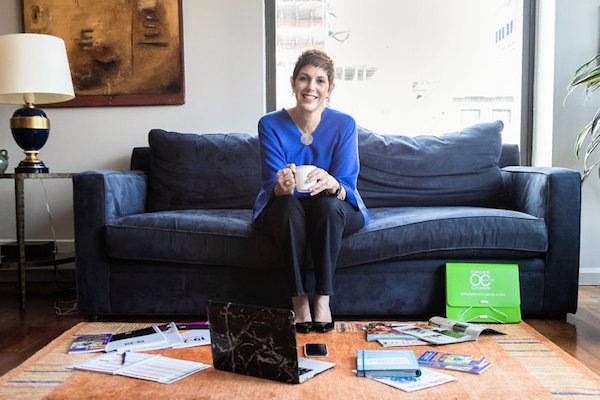
If Leslie’s name sounds familiar (and it should), it may be from the post Paper Doll Peeks Behind the Curtain with Superstar Coach, Author & Speaker Leslie Josel, where we talked about her multi-award-winning Academic Planner: A Tool for Time Management, which is celebrating its tenth anniversary,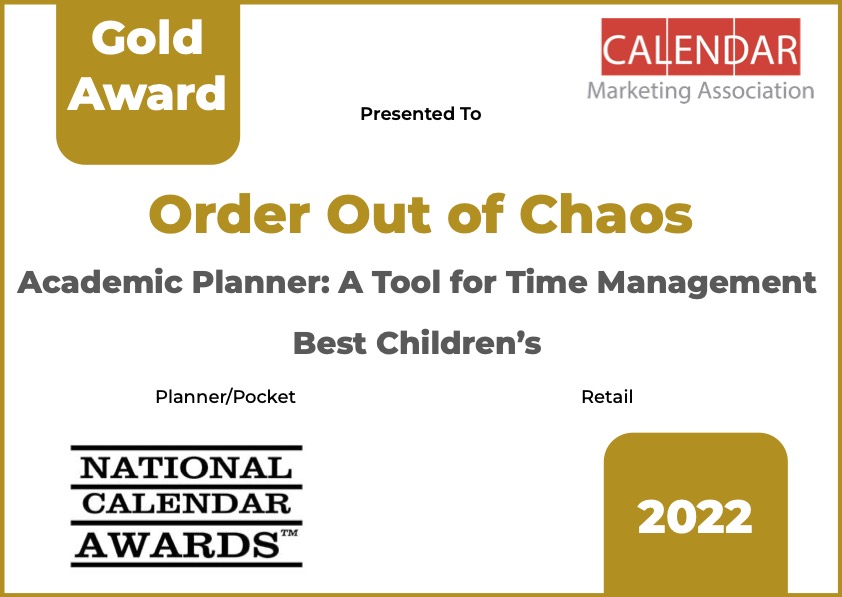
and her book, How to Do It Now Because It’s Not Going Away: An Expert Guide to Getting Stuff Done, which helps middle school, high school, and college students overcome academic procrastination and better manage manage time and study skills.
How Professional Organizers (& Hair Stylists) Reverse Some Intolerable Problems
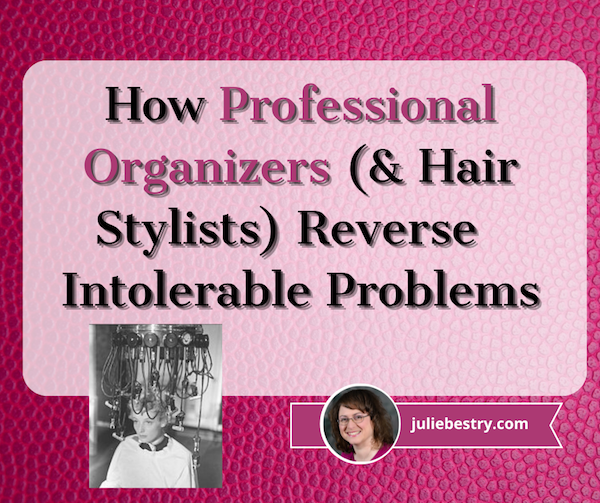
Kabarett der Komiker; Gisela Schlüter unter Friseurhaube by Willy Pragher (CC BY 3.0)
What’s annoying you today? What’s been annoying you so long that you almost don’t notice the annoyance until someone else mentions it?
Over Labor Day weekend, my air conditioner died. This was an acute problem, one that I noticed almost immediately (as the temperature was rising overnight instead of going down) and which led to much misery until the holiday weekend ended and the maintenance staff could address the problem fully.
(To be fair, they did bring a mobile A/C unit, which cooled my bedroom to a bearable temperature; unfortunately, it was so loud, I felt like I was sleeping adjacent to a jet engine. Sometimes, you trade one intolerable thing for another. That’s often what keeps you from seeking, or implementing a solution in the first place.)
That same weekend, I realized that my fridge was dying. Unlike the A/C unit, this was a less obvious thing to tolerate. The freezer was still working perfectly, and the contents of the fridge weren’t warm; they just weren’t entirely full-on chilly. Weeks earlier, the refrigerator had been making some moaning noises, but fiddling with the settings of the circa-1986 fridge seemed to stop the noise. And then I stopped noticing.
Two household problems, but one felt a lot more urgent than the other. But these weren’t the only problems.
Early in the pandemic, to ensure everyone’s safety, our complex had asked us to understand that they’d only be performing inside maintenance for emergencies. So, when we had torrential rains in the summer of 2020, the roof was repaired immediately; the ceiling, well, not so quickly.
When my hot water heater expired in the spring of 2021, I vacated my home and the nice gentlemen figured out the complexities of draining a water heater on the second floor to enable removal and installation of a new one. And later that summer, my smoke detector decided to start beeping in eight sequences of three loud bursts, every ten minutes, ALL.NIGHT.LONG. That was something I could not tolerate (and thankfully, the leasing office agreed).
However, there were other, smaller repairs where I managed DIY solutions or made do. It was easier to avoid contact during the pandemic for non-emergency issues. And then I just started tolerating some inconveniences.
WHAT YOU TOLERATE NEVER GOES AWAY
A few years ago, in Organize Away Frustration: Practice The Only Good Kind of “Intolerance,” we discussed how the first step to creating the kind of life you want is to start by identifying the unsatisfying things that you tolerate. Knowing what makes you unhappy helps you create a strategy for eliminating those “tolerations,” the obstacles to your happiness. (This is true with organizing tangible items, as well as dealing with things in your schedule, and even non-organizing things, like annoyances in our relationships and whether we live our true values.)
Knowing what makes you unhappy helps you create a strategy for eliminating those 'tolerations,' the obstacles to your happiness. Share on XAs I mentioned in that prior post, I see part of my role as a professional organizer and productivity expert as helping my clients identify the areas in which they’ve been tolerating inconveniences far too long. Recent client situations have included:
- Carla* never could find gift certificates when she was ready to use them. They were always in drawers, or in the greeting cards with which they were given. We collected all of them and then separated restaurant gift certificates from shopping gift certificates. The former might be used on any given evening when she and her spouse were already out of the house and might drop in somewhere to eat, so we created a wallet for dining out cards. For the latter, given that Carla only shopped on Saturday, we clipped them together and put them in the Saturday slot of her tickler file. (Every new gift card or certificate went to one of those two places from then on.)
- Joe always had trouble figuring out how to adjust the settings on his DVR. It didn’t help that his box of manuals included instructions for every gadget and device he’d owned since the early 1970s. We purged all of the manuals that applied to defunct gadgets, created folders in the “household” section of the Family Files with one folder for each type of technology (computers, entertainment, kitchen, etc.) But then we scanned the DVR instructions that plagued him as a PDF and put it in the Notes app on his phone so it was even easier to access (and enlarge).
- Jenny’s pantry was crowded with ingredients, including a wide variety of items marked “gluten-free.” But nobody in Jenny’s household was avoiding gluten! It turns out that an occasional weekend houseguest cooked while visiting and she needed gluten-free ingredients. We rearranged the pantry so that the occasional guest had her own labeled shelf, and everyone was happier.
- Patsy saw that when she’d click on a link, her browser would sometimes give her a “web kit error” or just a blank page. She’d been copying the link from one browser (Safari) to another (Chrome) where it would work just fine, but lately, she’d been having to do that more and more, increasing her frustration. Upgrading her operating system allowed her to upgrade her browser, and she no longer had to struggle.
* All names have been changed to protect client confidentiality.
Sometimes professional organizers are dealing with clutter, but all organizers end up dealing with obstacles to productivity. The problem is that we’re all more likely to ignore a problem that can’t be fixed immediately.
When we’re focused on the task at hand, whether that’s work or school or driving or parenting, the thing we’re doing is more likely to have a deadline or at least be time-based. We postpone removing the obstacle until such time as it becomes too large or problematic to withstand. This is what happens when people keep driving with the “Check engine” light glowing on their dash panel.

RECENT TOLERATIONS TACKLED
As I wrote about in Organize Away Frustration: Practice The Only Good Kind of “Intolerance,” many of the “intolerables” in our lives can be conquered with a little research and applying one of the following:
- A product
- A service
- A change in behavior
- A change in attitude
In that post, I shared how I was almost unrelievedly ecstatic to find a new kind of shower curtain hook that made changing out shower curtain liners much easier on my short-of-stature self. Today, I’d like to share just a few recent examples of how applying a combination of solutions have removed annoyances.
A Tale of Two TVs
Do you have any of those old, boxy CRT TVs in your home? I did. In fact, I had three, which is kind of ridiculous when you realize I’m a singleton. You see, I’d had a television in my living room and another in my bedroom. When the bedroom TV died (so long ago that I’m embarrassed to discuss the exact date), I moved the living room TV to the bedroom.
When I met a friend for lunch one day, she surprised me by having brought one of her old, boxy CRT TVs for my use! To this day, I’m flummoxed as to how she ever got it into her car, and though I recall basically rolling/sliding it up the carpeted stairs of my apartment, I’ve got no idea how I ever managed to get it from my car to my own front door. (Perhaps this is like how they claim women forget the pain of childbirth?)
Eventually, I got a modern flat-screen TV for my living room. But I also embraced the advice not to have screens in the bedroom (to avoid that sleep-stealing blue light) and got rid of cable in that room. Thus, I had a broken TV, a gifted (no longer used) TV, and an unused TV. All on the second floor of my home.
Did I mention these are big, heavy, boxy TVs?
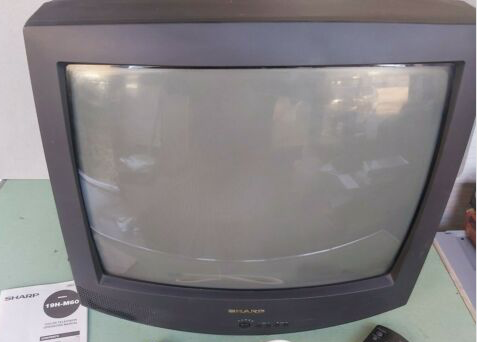
Remember how I said I had my hot water heater replaced last year? Well, one of those TVs took up most of the empty space at the top of the staircase, and so even though our apartment complex had been pretty insistent that we were never to ask the maintenance men to carry or remove anything unrelated to their work, the guys decided that it would be to everyone’s benefit to get that one TV out. Yay! But that still left two.
To be fair, I wasn’t always just tolerating the annoyance of having two unused, dust-catching, space-hogging CRT TVs in my home. I had called the various junk haulers in town, but they wanted a frustratingly large fee for something that I could have done myself, had I only been stronger, had slightly longer arms to get fully around the TVs, and had been a bit taller (so I could have seen the stairs over the top of the TVs and not feared tumbling down).
Yes, even we professional organizers fall prey to those self-imposed obstacles. Had I thrown a little money at the problem, it would have been solved back then.
I also called many non-profits, but nobody wanted donated CRTs.
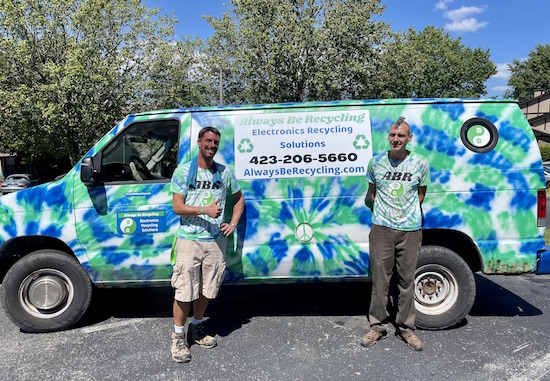
Fast forward to late August, when I contacted Chattanooga’s Always Be Recycling. The owners, a couple who’d moved from Pennsylvania, opened their business here just at the start of the pandemic. I’d networked online with Leann Cinaglia to see how their services might dovetail with my clients’ needs. The last time we’d spoken, they weren’t able to handle CRTs because of the difficulty in recycling them, but on a day where the frustration had just gotten too high, I called to see if they might have any suggestions for other solutions. And that’s where the magic happened!
It turns out that annoyingly boxy 20″ CRT TVs have become popular with the retro gaming crowd! After one short phone call, Always Be Recycling’s co-owner Jamison Cinaglia and his associate Bret (pictured above) arrived on time the next day and quickly removed both TVs and oodles of old landline phones, cables, and cords as well — at no charge. (Had I lived significantly farther from their venue, there would have been a fee, but significantly less than the various junk haulers had quoted me.)
Throughout the entire interaction, they were professional, careful, friendly, and polite. This bodes well for knowing they’ll treat my clients, especially the elderly and/or delicate ones, with respect and compassion.
So, this is a reminder that sometimes, the key is to continue to ask for input on solutions until the right one appears.
No Longer Hot Under the Collar
Not all intolerances are about excess or clutter. A major frustration in my life is heat. (And no, that’s not specific to the air conditioning and refrigerator woes.) I’m just always too hot. I hydrate. I wear temperature-appropriate clothing. But no matter what, even my head perspires and my hair frizzes and I end up looking like Art Garfunkel. (No offense, Art.)
And yes, I realize that a Buffalonian living in the Deep South might have found a more obvious solution to that problem over three-plus decades.
I’ve tried those evaporative cooling neck scarves and “chilly towels.”
Paper Doll Picks: Organizing and Productivity Podcasts

FINDING THE RIGHT EXPERTS
I’m often the most tech-savvy person my clients know. One lovely client in her eighties often greets me at the door and just hands me her iPhone. “There’s a devil in it,” she half-jokes, and she’s happy to relinquish it to me for what is usually an easy fix.
Conversely, my college friends, mostly guys, laugh at the idea of me being technological. On the phone, I once fretted over having possibly failed to install memory in my computer because it didn’t “click.” After an hour of various difficulties culminating in the uncertainty over installing the memory, I groused, “Shouldn’t it click? Y’know, like how after I put on my lipstick, I close my compact and it makes a satisfying click?!” They’re still teasing me about that apparently “non-techy” description.
There’s an old expression: In the land of the blind, the one-eyed man is king. Leaving aside the able-ist nature of the expression, I feel comfortable using this to explain that while some people feel that “a little knowledge is a dangerous thing,” I think that the more you know, the more you realize that you don’t know, and the more inspired you are to seek out experts.
As such, I’m starting a new feature, Paper Doll Picks, where I will occasionally provide links to bloggers, authors, and other experts to whom you can turn when you need a little extra help.
As a Certified Professional Organizer, I’m an organizing and productivity expert. As an Evernote Certified Expert (formerly Evernote Certified Consultant), I know more than your average user. And, as a former television executive and lifelong TV viewer, I can spot when an infinitesimally small clue (a cough, a camera shot resting an extra second on a wine glass, or a character’s lingering glance) means something and will be able to connect it with things that happen seven seasons later.
But in the kitchen, I’m a perpetual newbie and need to turn to Paper Mommy. (For a variety of life skills — cooking, addressing an invitation to an ambassador and spouse, medical stuff of all stripes, I turn to her. We call it Opening the Mommy Encyclopedia.)
Nobody is expected to know and be able to do everything. Sometimes, that other old rubric is important: it’s not what you know, but whom you know!
Today, I want to introduce (or re-introduce you) to some excellent podcasts and podcasters.
THE APPEAL OF PODCASTS
If you don’t listen to podcasts, stick with me here. I admit, I don’t listen as often as many people seem to do. But when you’re walking or working out, when you’re stuck in a doctor’s office waiting room or waiting for a much-delayed flight (as Paper Mommy is doing, just as I’m writing this), podcasts have distinct advantages.
They’re as informative as blog posts and articles, but you can take it in while doing other tasks. Every try reading a blog post in the bath? You can’t read an article while driving, and if your commute is by train, subway, or car, audio is far less marred by bumps. (You won’t get carsick listening to an organizing podcast, but watching text bounce up and down may not be good for your equilibrium.)
Another nifty advantage to podcasts is that you can control the speed at which you listen to (or watch) podcasts! I listen to almost everything on 1.25x speed because I’m an impatient person. When a speaker talks at “normal” speed, I feel like I’m being held captive by Dory in Finding Nemo when she’s speaking Whale. Sooooooooo slowwwwwwww!
Conversely, when I’m trying to listen to podcasts in Italian, the language I’ve been diligently studying for 4 years, the organic speed of language just zips right past me, and I only get a handful of words. By the time I realize I understood anything, they’re onto the next topic. Listening at .75x helps me make out the words without going into Dory mode.
ORGANIZING AND PRODUCTIVITY PODCASTS
These are a few of my favorite podcasts in the realm of organizing and productivity.
NAPO Stand Out Podcast

The NAPO Stand Out Podcast — This official podcast of the National Association of Productivity and Organizing Professionals began in 2018 with an interview of its first guest, my stellar and stylish colleague Geralin Thomas of Metropolitan Organizing. Now, it’s just a few shows away from its 100th episode.
The NAPO Stand Out podcast offers up compelling interviews with NAPO members and subject matter experts (like author Gretchen Rubin, friend-of-the-blog Allison Task, whom I interviewed in Paper Doll Interviews Life Coach, Author, and Kid-Schlepper Allison Task, and Indistractable author Nir Eyal).
For the first few years, the show was hosted by Sarah Karakaian of Nestrs. (You might know Sarah and her husband, a home improvement, design, staging, and short-term rental management team from HGTV, their Thanks for Visiting AirB&B podcast, or Instagram.)
Now, the podcast is hosted by Canadian professional organizer and TV personality Clare Kumar, an all-around cool chick with a laugh that can draw in even the grinchiest of grinches. Clare specializes in helping Highly Sensitive Persons (HSPs) optimize their professional performance, and she has her own podcast, Happy Space with Clare Kumar, all about helping HSPs find their own happy spaces.
The NAPO Stand Out podcast invites organizers, productivity experts, and anyone interested in these fields to listen in as guests share their successes, challenges, best practices, proven strategies, industry developments, and fabulous anecdotes.
Take a peek at the most recent episode, Discover Your Organizing Style, where Clare interviews Cass Aarssen about how her own struggles with clutter led her to create the Clutterbug Organizing Styles.
Watch and listen to past episodes through the archives at Apple Podcasts, Spotify, YouTube, Stitcher, and elsewhere.
Smead’s Keeping Your Organized Podcast

Smead’s Keeping You Organized — It still breaks my heart a bit that this magnificent video and audio podcast, hosted by John Hunt, is no longer being produced. It was an amazing podcast designed to provide all manner of practical and philosophical organizing and productivity information to viewers.
John is a delightful interviewer — you can see him being interviewed for an early episode of the NAPO Stand Out podcast, here — and all sorts of North American professional organizers got to share their expertise.
Happily, all 278 episodes of the show are still available, including the eight times I was the guest. You can listen or watch those here, or at the episode page:
041: Secrets to Organizing a Small Business
108: Fears that Keep You from Getting Organized
153: Paper vs. Digital Organizing Part 1
154: Paper vs. Digital Organizing Part 2
203: How to Get Organized When You Have an Extended or Chronic Illness – Part 1
204: How to Get Organized When You Have an Extended or Chronic Illness – Part 2
263: Essential Lists for Organized Travel – Part 1
264: Essential Lists for Organized Travel – Part 2
Sadly, all of my appearances were from before I had a decent video podcast background or lighting, so you may want to listen rather than watch (or risk being distracted by weird shadows and my often–weird hair).
The Productivity Lovers Podcast

The Productivity Lovers Podcast is hosted by two of my friends and colleagues, Certified Professional Organizers Cris Sgrott of Organizing Maniacs and Deb Lee of D. Allison Lee.
Both are organizers and productivity specialists; Cris is also a coach and speaker who specializes in senior move management and helping people with chronic disorganization and ADHD. Deb is a digital productivity coach and possesses one of the greatest analytical minds of anyone I know. (Deb’s my go-to for solving online platform kerfuffles, but also for making sense out of things that seem incomprehensible.)
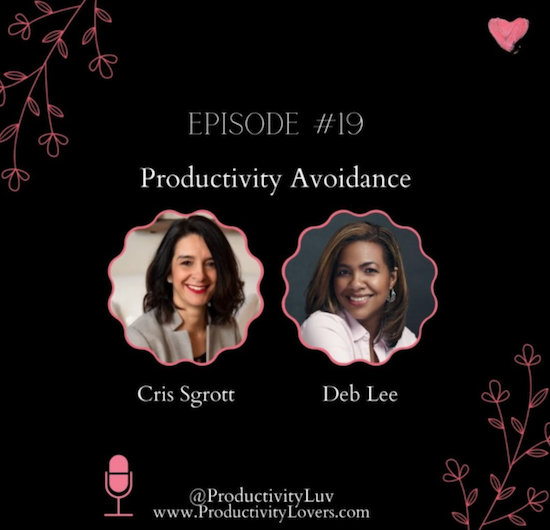
Launched one year into the pandemic, Cris and Deb’s podcast was a balm for any lonely organizer’s (and organizing client’s) soul. Listening along when I get my 10,000 daily Fitbit steps in or watching the video version as if I were Zooming with them, I often find myself talking back to these ladies, forgetting that I’m not really part of the conversation — because they are that warm, friendly, funny, and honest.
At least once an episode, I laugh at how they make one another laugh, with much of the humor coming from their mismatched productivity styles. Deb is all-digital; Cris is hybrid but leans into her love of paper planners. Cris calls herself a Hot Potato Productivity person, while Deb is super-focused.
Cris and Deb cover all sorts of productivity issues, from paper planners to Inbox Zero, the Pomodoro Technique to how organizing is portrayed in the media. Every episode is a lighthearted conversation between two friends, but the audience is never forgotten, as they invite our responses on their Facebook, Instagram, Twitter, and YouTube pages.
Come for the conversation, stay for the detailed show notes and discussion points. Pick from the audio versions via your favorite podcast app or on the episode page; watch for the video version on YouTube a week or two later. Here’s a recent episode, to give you a taste.
Organize Your Stuff
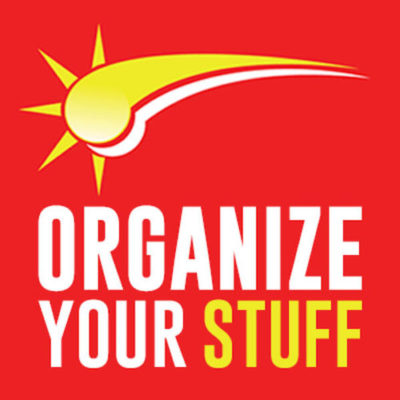
Organize Your Stuff — My colleague, buddy, and fellow mastermind group member, Maria White of Enuff With the Stuff hosts this podcast, which invites people from all points along the organizing spectrum to help them see possibilities.
While Maria has been on hiatus for a bit, there are 37 episodes covering topics ranging from “Do You Trello?” (yes, dear readers, I do!) and “Organized Adulting” to “Finally Accomplish Goals Using the 48 Week Achievement Guide” (with our fellow masterminder, Karen Sprinkle) to “Drastic Downsizing for Tiny Living” (for folks eager to learn more about living in a tiny house). Maria accents self-compassion and realistic approaches as she interviews industry experts and provides her insights and tips on organizing.
Organize Your Stuff is audio-only, so feel free to take it with you wherever you go, whether via Apple Podcasts, Spotify, Google Podcasts, or on the Organize Your Stuff episode page. Take a tiny taste of the show as we pull episode #14, Tickle Yourself Organized, out of the vault. As you may have guessed, she interviewed me, your own beloved Paper Doll!
Anything But Idle (and the Super-Friends)
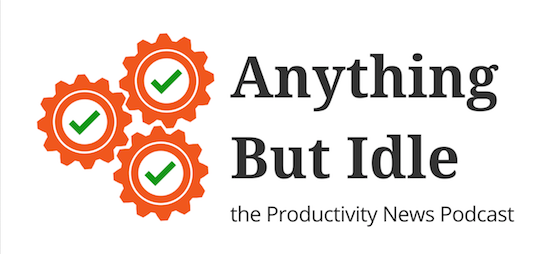
Anything But Idle is hosted by Ray Sidney-Smith and Augusto Pinaud, and it would be one of my favorite podcasts even if these guys didn’t delight me by inviting me on the show on occasion.
Ray is the Ryan Seacrest of productivity podcasters; he’s everywhere! In addition to Anything But Idle, he currently hosts or has previously hosted oodles of productivity-adjacent podcasts, including:
- The ProductivityCast with Augusto and regular contributors Francis Wade (about whom I’ve written several times, including at Paper Doll Shares Secrets from the Task Management and Time Blocking Summit), and Art Gelwicks. The show explores personal productivity and includes interviews with experts, reviews of both the scientific literature and mainstream media takes on productivity, and looks at technology’s role in, and effects upon, achieving what you set out to do.
- Getting More Done with Evernote, where Ray talks about product updates, interviews Evernote experts (including staff of the big green elephant company), and answers submitted listener questions. The show has been on hiatus since last year, but Ray is re-launching soon, and I’m going to be a guest. Whoohoo!
- Productivity Book Group — This is a quarterly book club and podcast rolled into one, and the archives include episodes dating back to 2013. You could create an entire productivity-themed reading list from the archives of this show, read the books, and then listen to the associated episodes to augment your understanding. The show isn’t limited to professional productivity; one recent episode focused on Clea Shearer and Joanna Teplin’s The Home Edit.
- ProdPod — Dating back to 2011, this might be the one that started Ray’s podcasting empire. In under two minutes, each podcast explores a productivity-related topic, like minimalism, procrastination, burnout, or indecision.
While I am a Certified Evernote Expert, Ray lives and breathes Evernote, and is one of two people (fellow organizer Stacey Harmon is the other) to whom I turn when an Evernote issue makes my hair hurt.
But back to Anything But Idle!
Ray partners with Augusto Pinaud, a bilingual productivity and technology sweetie pie of the highest order. His company, Productivity Voice, is the umbrella over Augusto’s coaching services, books, and podcasting work. In addition to co-hosting Anything But Idle and the ProductivityCast with Ray, Augusto has hosted Connecting Invisible Dots, a limited-run podcast focused on looking at the big issues, like personal definitions of time, achieving focus, and understanding priorities.
Wow, and all those shows don’t even include all of the podcasts represented by Anything But Idle’s regular guests. (Sometimes I think I may be the only guest they’ve ever had who doesn’t have a podcast!)
Anything But Idle bills itself as the “Productivity News Podcast.” Every week, Ray and Augusto introduce productivity and technology stories in the news and discuss their relevance. Guests are given the opportunity to read (and think about) the articles and editorials in advance, so listeners are treated to a lively, informed discussion. This opens up the floodgates for really wide-reaching, unexpected, extemporaneous chat; as a guest, I’ve felt supported, and as a viewer or listener, I always feel entertained and better informed.
Each week also includes a round-robin opportunity for each person to present a technology or productivity resource. There’s always at least one thing (and usually many) to make you go “hmmmmm.”
You can watch the podcast live or catch up on past video versions of the episodes at the show’s YouTube page; the show is live at 6 p.m. EST most Monday nights. (Click “Set a Reminder” on the show page to make sure you don’t forget.) If you prefer audio versions, you can peruse the Anything But Idle episodes archive, or subscribe and listen on your favorite podcast app at Apple Podcasts, Google Podcasts, Android, Spotify, or Stitcher.
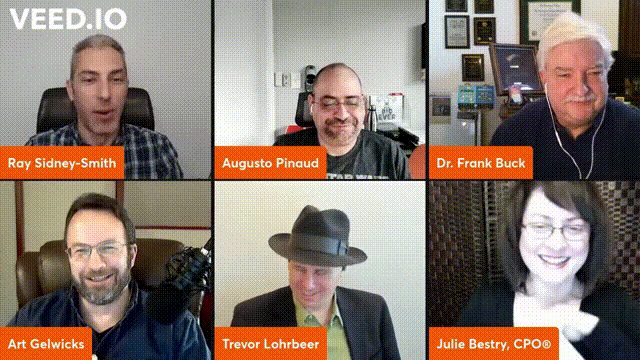
The most recent episode is up in all locations, but you might find it fun to watch their 100th episode. I was a guest, and a REALLY fun time was had by all.
Frank Buck: Productivity for Total Control & Peace of Mind
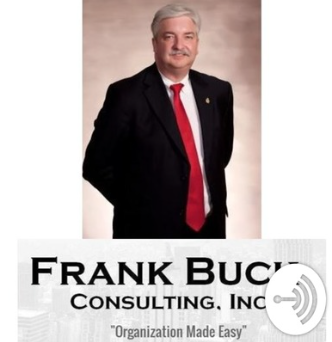
Frank Buck: Productivity for Total Control & Peace of Mind — Dr. Frank Buck is a longtime educator and educational administrator, as well as a fellow Evernote Certified Expert. (He’s also another familiar face on Ray and Augusto’s podcasts!) Frank is the author of several books, including the most recent, Get Organized Digitally! The Educator’s Guide to Time Management.

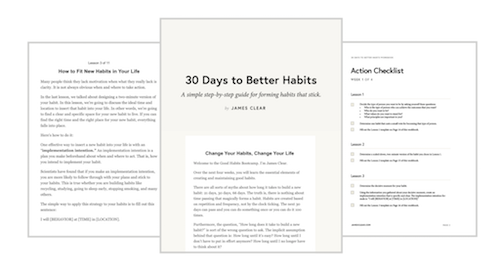
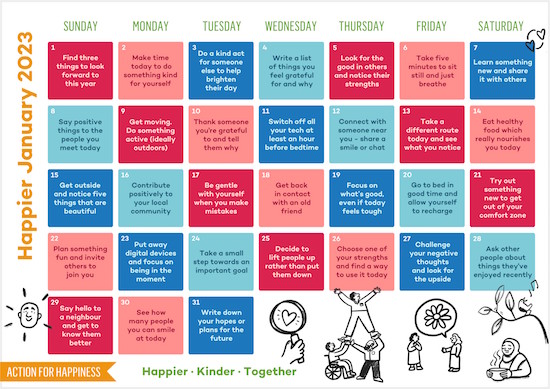
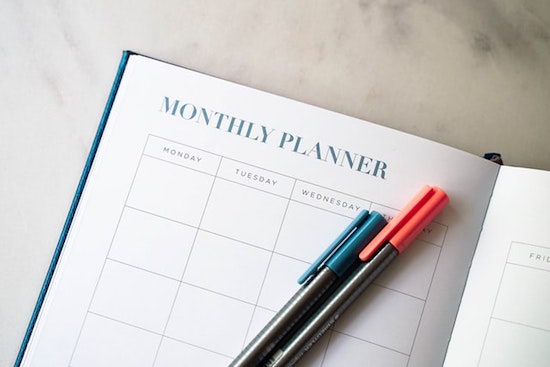

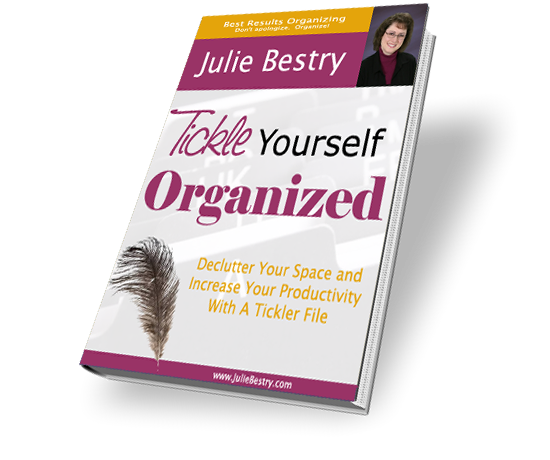

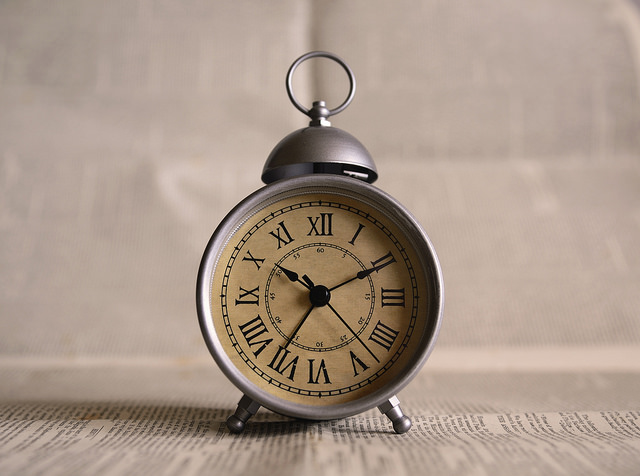

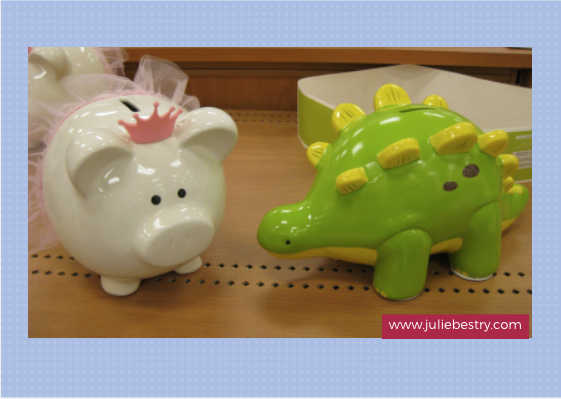
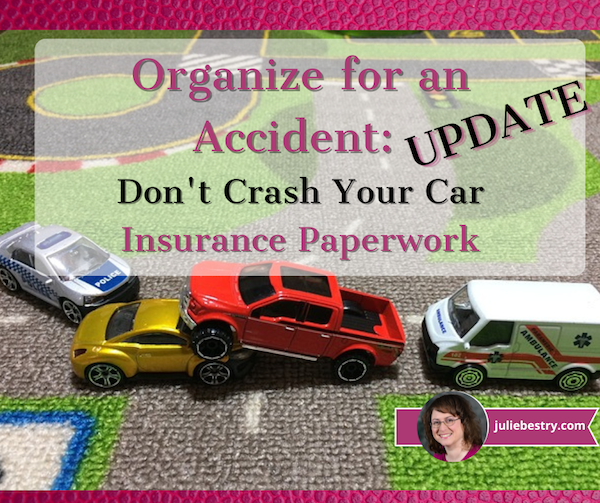

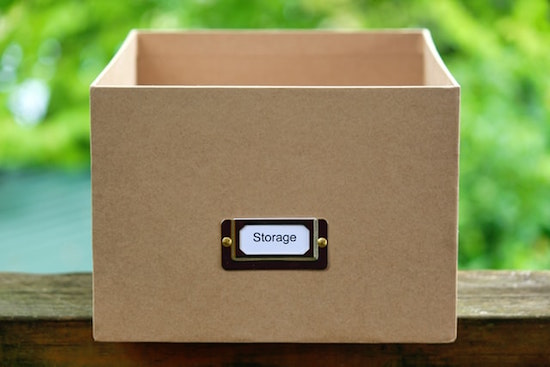


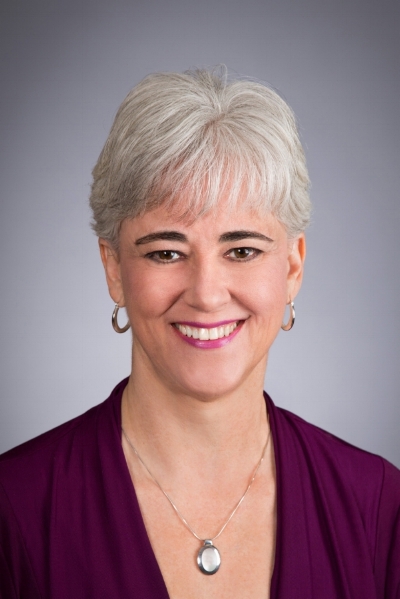
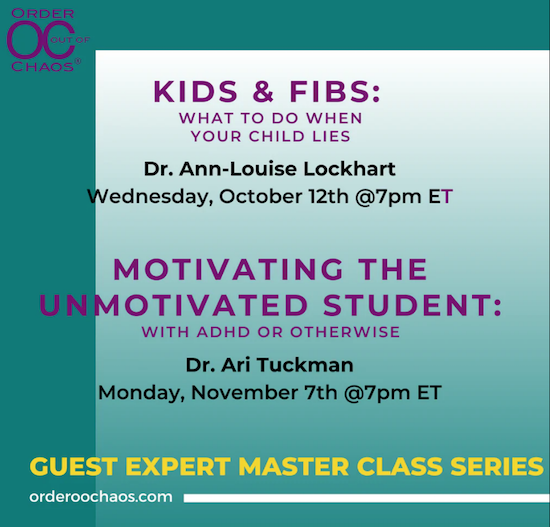


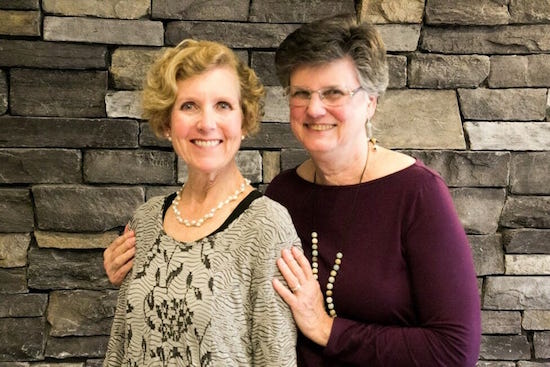

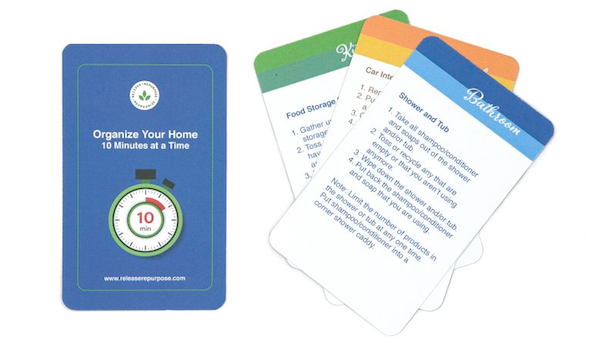
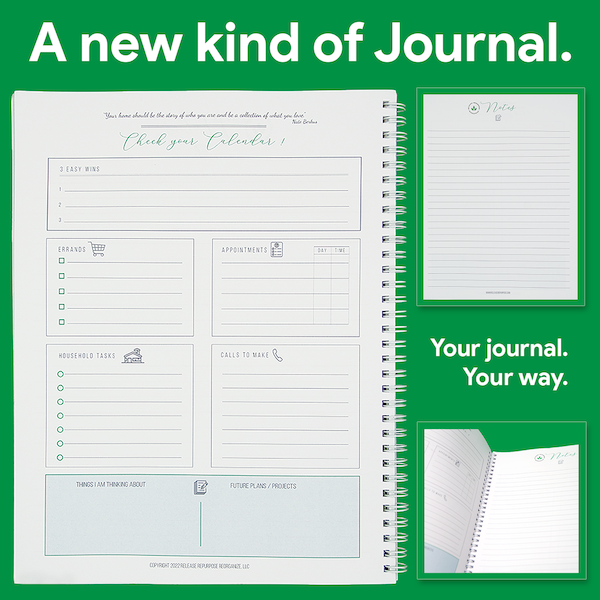


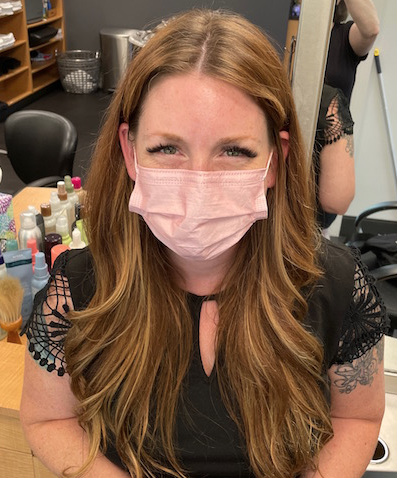





Follow Me